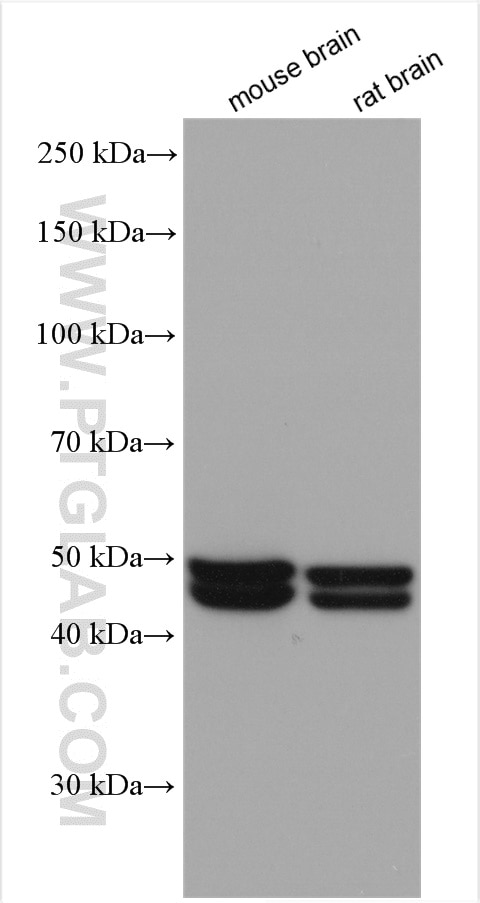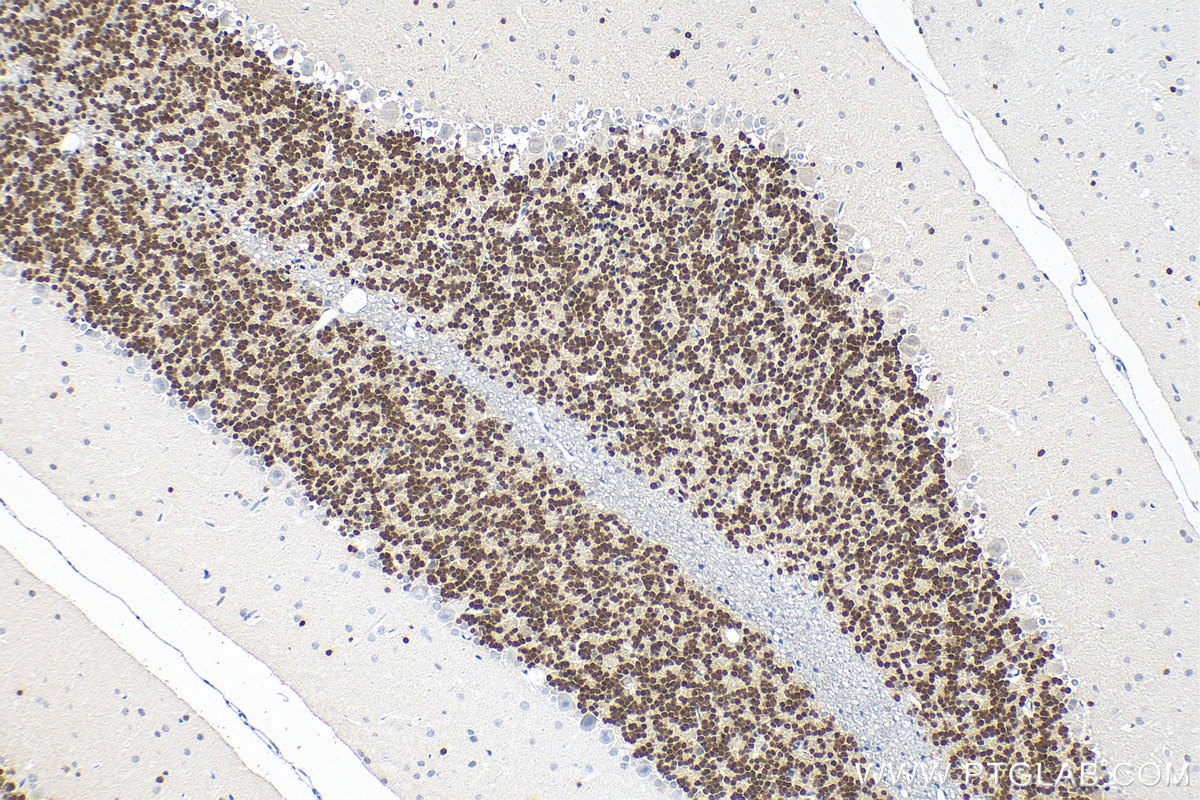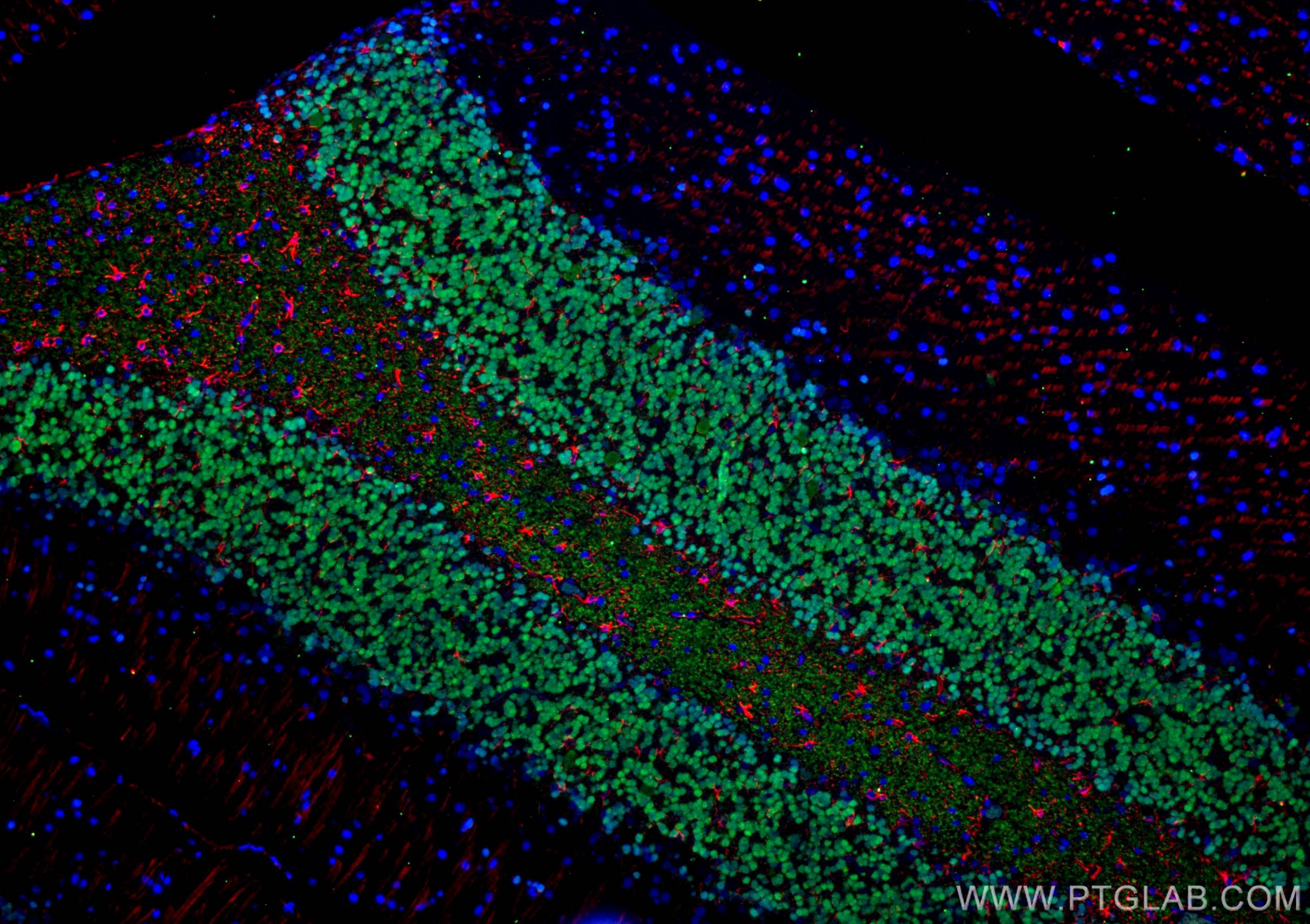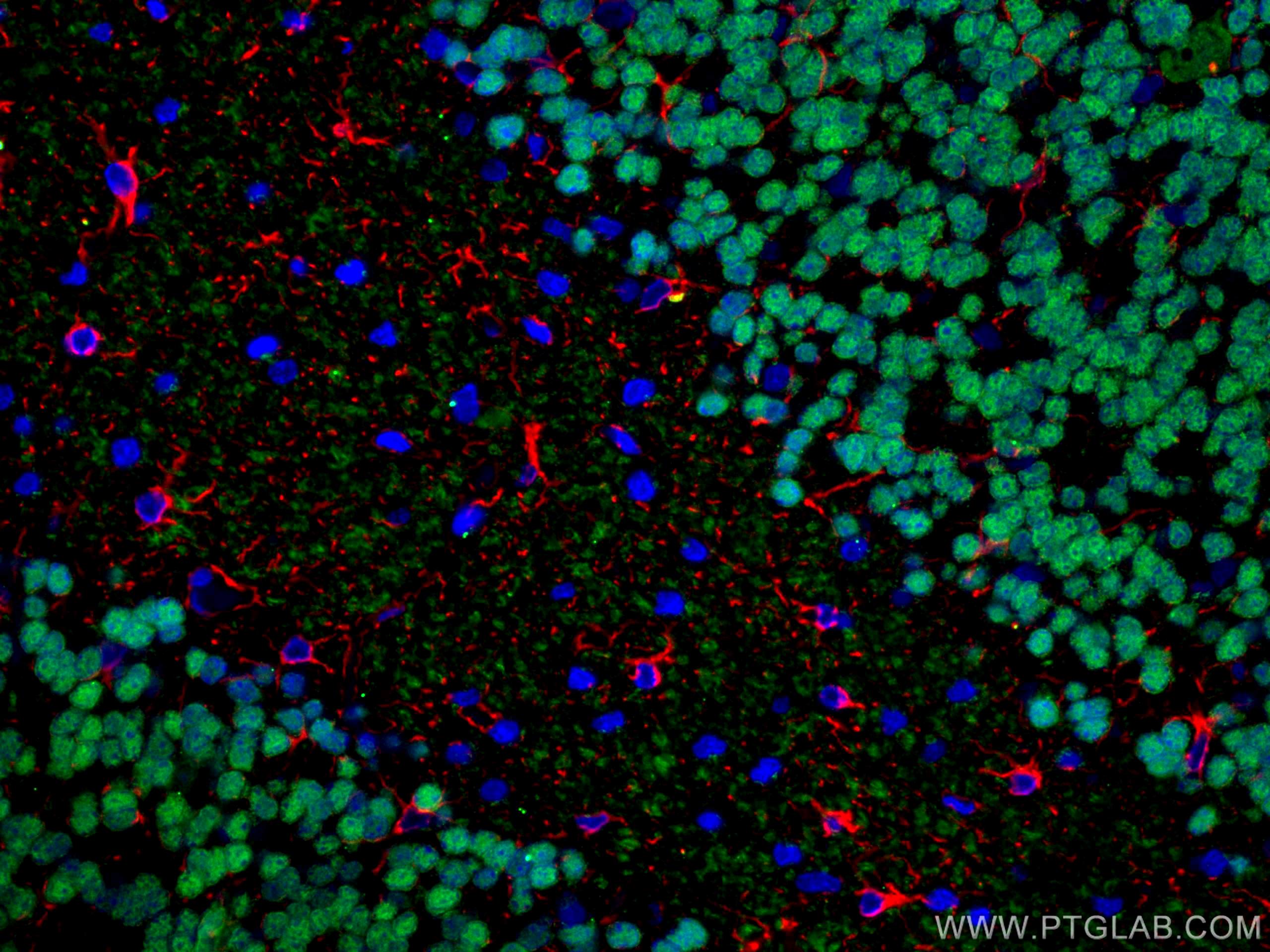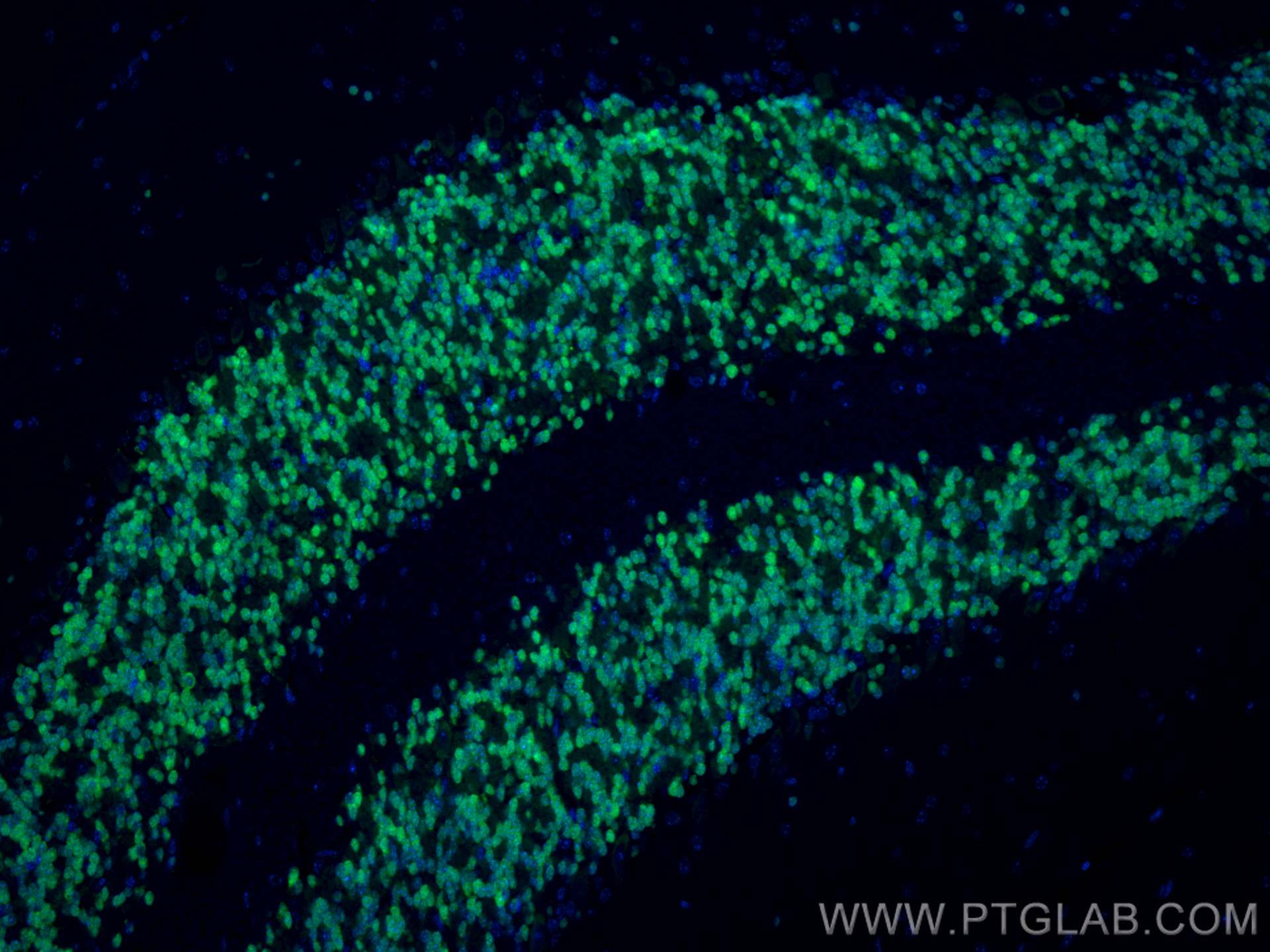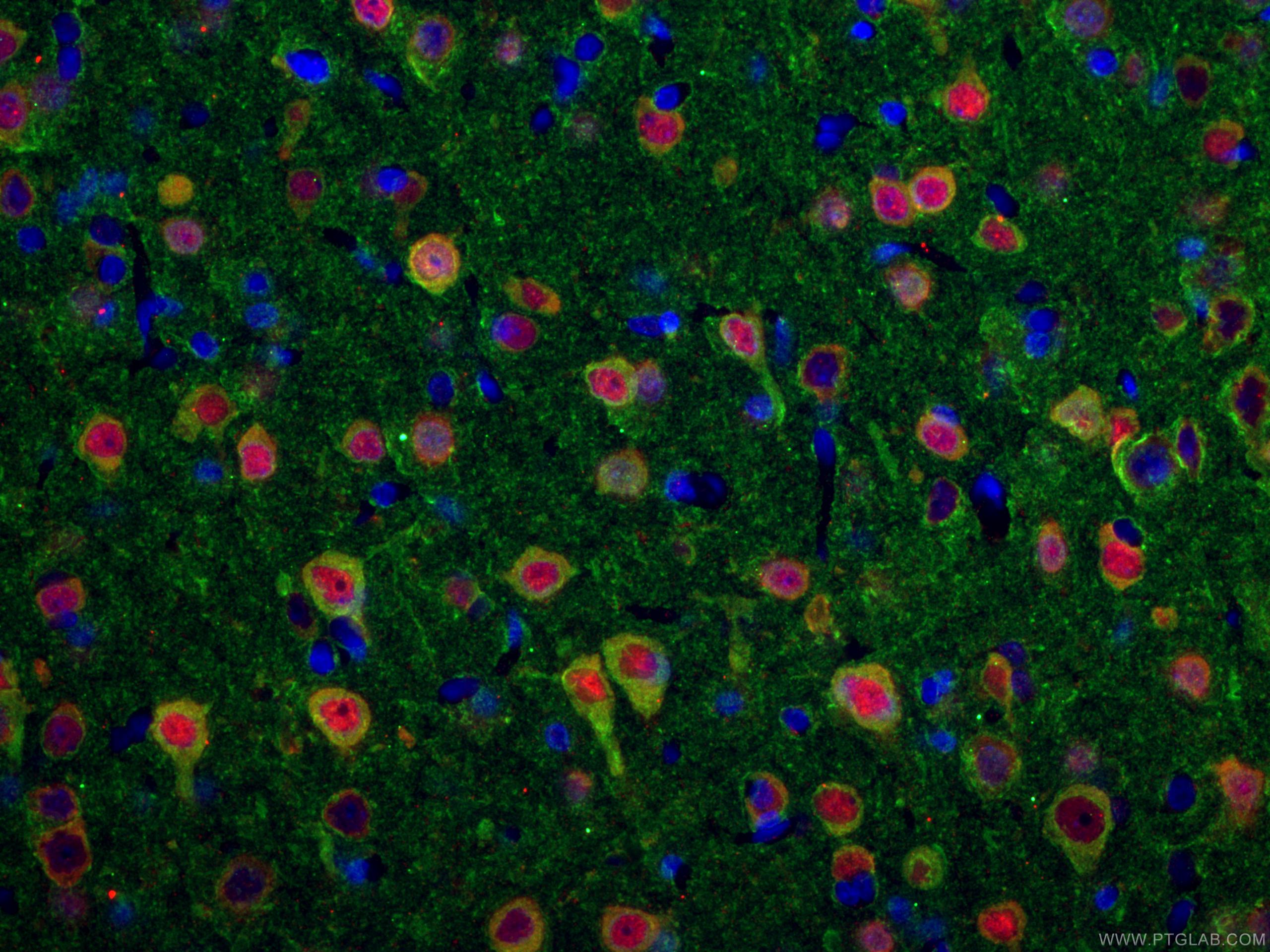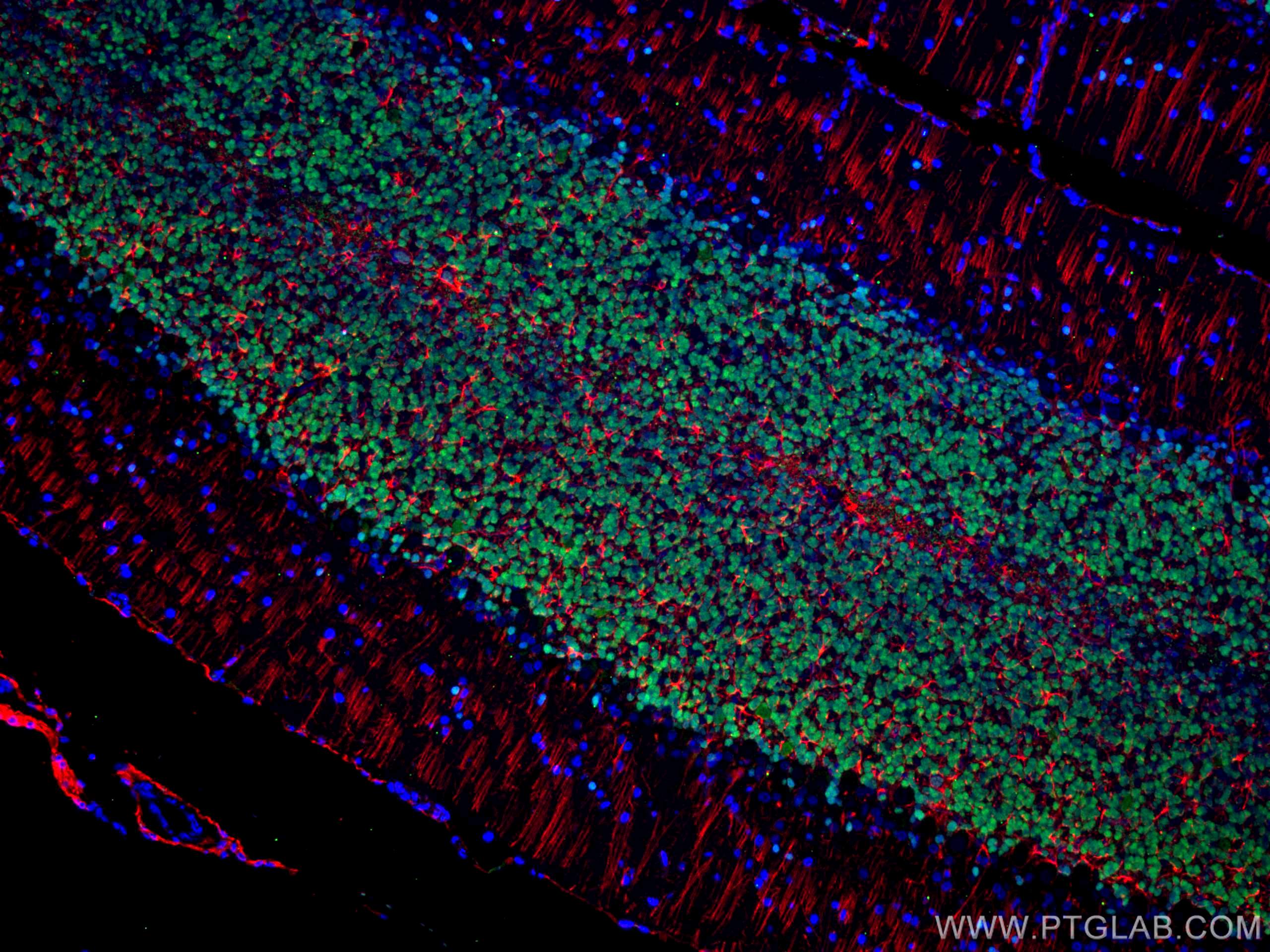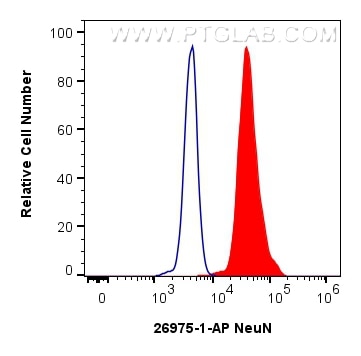Anticorps Polyclonal de lapin anti-NeuN
NeuN Polyclonal Antibody for FC, IF, IHC, WB, ELISA
Hôte / Isotype
Lapin / IgG
Réactivité testée
Humain, porc, rat, souris et plus (1)
Applications
WB, IHC, IF, FC, Dot blot, ELISA
Conjugaison
Non conjugué
199
N° de cat : 26975-1-AP
Synonymes
Galerie de données de validation
Applications testées
| Résultats positifs en WB | tissu cérébral de souris, tissu cérébral de rat |
| Résultats positifs en IHC | tissu de cervelet de rat, il est suggéré de démasquer l'antigène avec un tampon de TE buffer pH 9.0; (*) À défaut, 'le démasquage de l'antigène peut être 'effectué avec un tampon citrate pH 6,0. |
| Résultats positifs en IF | tissu de cervelet de rat, tissu cérébral de rat, tissu de cervelet de souris |
| Résultats positifs en cytométrie | cellules MG U-87, |
Dilution recommandée
| Application | Dilution |
|---|---|
| Western Blot (WB) | WB : 1:2000-1:10000 |
| Immunohistochimie (IHC) | IHC : 1:10000-1:40000 |
| Immunofluorescence (IF) | IF : 1:50-1:500 |
| Flow Cytometry (FC) | FC : 0.20 ug per 10^6 cells in a 100 µl suspension |
| It is recommended that this reagent should be titrated in each testing system to obtain optimal results. | |
| Sample-dependent, check data in validation data gallery | |
Applications publiées
| WB | See 31 publications below |
| IHC | See 31 publications below |
| IF | See 158 publications below |
Informations sur le produit
26975-1-AP cible NeuN dans les applications de WB, IHC, IF, FC, Dot blot, ELISA et montre une réactivité avec des échantillons Humain, porc, rat, souris
| Réactivité | Humain, porc, rat, souris |
| Réactivité citée | rat, Humain, poisson-zèbre, porc, souris |
| Hôte / Isotype | Lapin / IgG |
| Clonalité | Polyclonal |
| Type | Anticorps |
| Immunogène | NeuN Protéine recombinante Ag25689 |
| Nom complet | hexaribonucleotide binding protein 3 |
| Poids moléculaire observé | 46-52 kDa |
| Numéro d’acquisition GenBank | NM_001082575 |
| Symbole du gène | hCG_1776007 |
| Identification du gène (NCBI) | 146713 |
| Conjugaison | Non conjugué |
| Forme | Liquide |
| Méthode de purification | Purification par affinité contre l'antigène |
| Tampon de stockage | PBS avec azoture de sodium à 0,02 % et glycérol à 50 % pH 7,3 |
| Conditions de stockage | Stocker à -20°C. Stable pendant un an après l'expédition. L'aliquotage n'est pas nécessaire pour le stockage à -20oC Les 20ul contiennent 0,1% de BSA. |
Informations générales
Function
NeuN, also known as FOX3 or RBFOX3, belongs to a family of tissue-specific splicing regulators and is involved in neural circuitry balance, as well as neurogenesis and synaptogenesis (PMID: 26619789).
Tissue specificity
NeuN is exclusively present in post-mitotic neurons and is absent from neural progenitors, oligodendrocytes, astrocytes, and glia (PMID: 1483388).
Involvement in disease
· NeuN cytoplasmic localization is increased in the neurons of patients with HIV-associated neurocognitive disorders (PMID: 24215932).
Isoforms
There are 4 isoforms of NeuN, migrating in the 45-50 kDa range (PMID: 21747913).
Post-translational modifications
Currently not known.
Cellular localization
NeuN predominantly localizes to the nucleus but can also be present in the cytoplasm. Isoforms of NeuN differ in their cytoplasmic/nucleus localization (PMID: 21747913).
Protocole
| Product Specific Protocols | |
|---|---|
| WB protocol for NeuN antibody 26975-1-AP | Download protocol |
| IHC protocol for NeuN antibody 26975-1-AP | Download protocol |
| IF protocol for NeuN antibody 26975-1-AP | Download protocol |
| Standard Protocols | |
|---|---|
| Click here to view our Standard Protocols |
Publications
| Species | Application | Title |
|---|---|---|
Immunity Fate mapping of Spp1 expression reveals age-dependent plasticity of disease-associated microglia-like cells after brain injury | ||
Neuron Astrocytic ApoE reprograms neuronal cholesterol metabolism and histone-acetylation-mediated memory. | ||
Sci Adv CGG repeat RNA G-quadruplexes interact with FMRpolyG to cause neuronal dysfunction in fragile X-related tremor/ataxia syndrome. | ||
Nat Commun An injury-induced serotonergic neuron subpopulation contributes to axon regrowth and function restoration after spinal cord injury in zebrafish. | ||
Brain Huntingtin silencing delays onset and slows progression of Huntington's disease: a biomarker study. | ||
Front Behav Neurosci Lateral septal nucleus, dorsal part, and dentate gyrus are necessary for spatial and object recognition memory, respectively, in mice |
Avis
The reviews below have been submitted by verified Proteintech customers who received an incentive forproviding their feedback.
FH Damien (Verified Customer) (02-15-2024) | Works well in 2D staining of induced neurons, starting at 14days. Fixed and permeabilized with 3%BSA and 0.1% Triton
|
FH Monika (Verified Customer) (06-08-2023) | Very specific and strong signal. Used without antigen retrieval. Worked good for both NBT/BCIP-colorimetry and Alexa fluor-fluorescence detection.
|
FH Russell (Verified Customer) (05-23-2023) | Antigen heat retrieval with Citrate buffer pH 6.0 at 100C for 20 min Permeabilized with 1% TX-100 Blocking Buffer PBST with 5% Donkey Serum
|
FH Irina (Verified Customer) (11-18-2021) | Good specific neuronal signal. Works nicely for double IF to look at co-localisation with other proteins.
|
FH David (Verified Customer) (01-13-2020) | Good nuclear localisation, with strong signal and low background.
|
FH Maxence (Verified Customer) (09-05-2019) | Labeling was neat without any background. Signal was quite strong and stable.
|
FH Elena (Verified Customer) (07-31-2019) | Good antibody, stained in all cell lines we used it for.
|
FH Kaspar (Verified Customer) (01-26-2018) |
|
